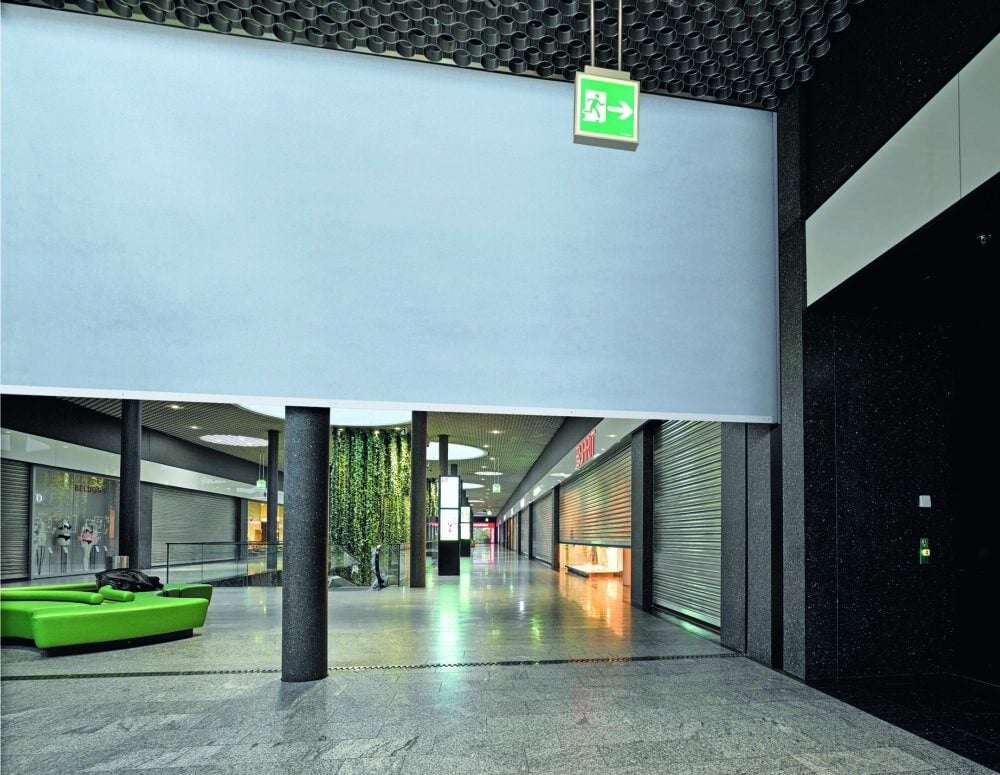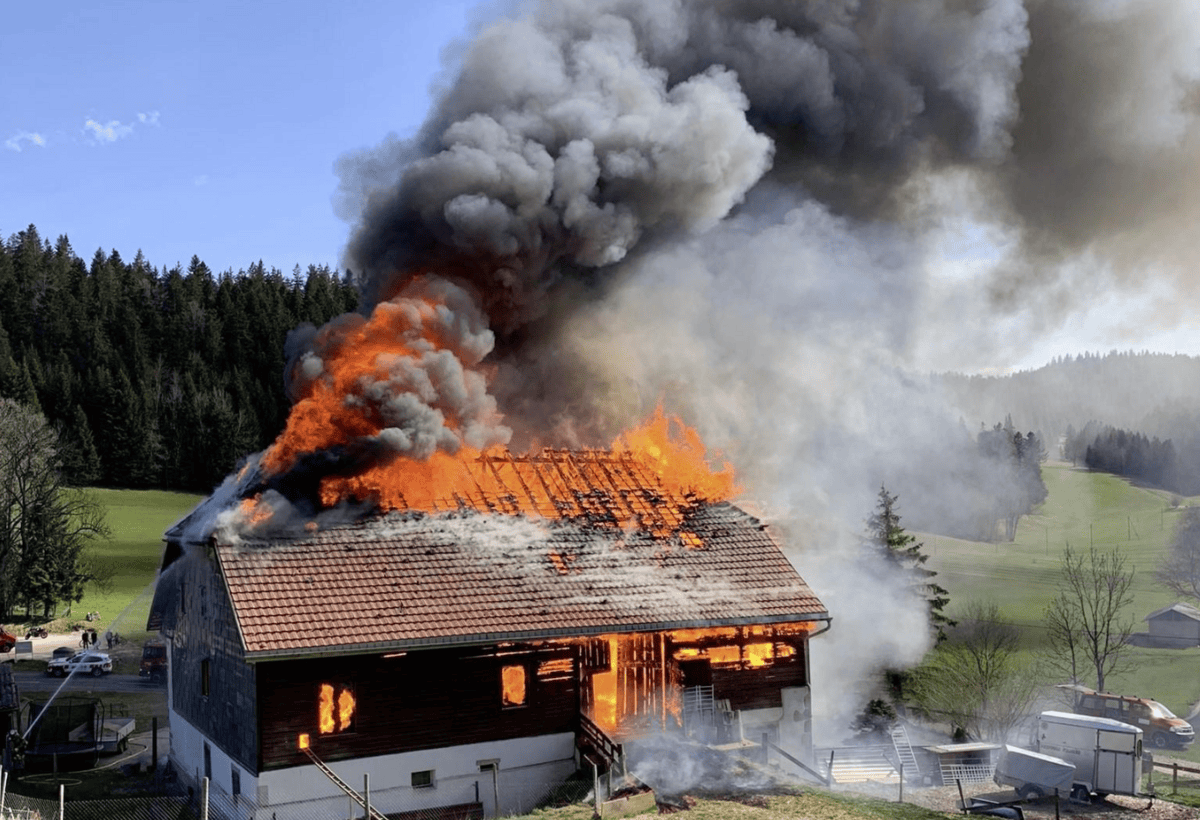Preparation for emergencies and organization of evacuations
An emergency and evacuation organization aims, on the one hand, to prepare all persons in the affected buildings for an emergency in the best possible way and, on the other hand, to avoid personal injury and damage to property through correct behavior. The emergency and evacuation organization is primarily a measure of preventive operational fire protection.

In Switzerland, fire protection is regulated on a cantonal basis. However, the Association of Cantonal Fire Insurers (VKF) has drawn up a large number of supracantonal regulations and recommendations, which are applied in most cantons on the basis of cantonal adaptation decrees. Consequently, there are hardly any differences between the various cantons and their regulations, at least with regard to the applicable law. In the canton of Zurich, the Ordinance on Preventive Fire Protection (VVB) of December 8, 2004, based on the Law on Fire Police and Fire Services of September 24, 1978, forms the legal basis for fire protection. The VVB declares a large number of intercantonal decrees of the VKF to be legally binding and applicable (§ 1). It also defines buildings and facilities with an increased fire risk, which in turn are subject to increased safety regulations, such as the existence of an alarm and evacuation organization. Finally, the VVB also stipulates that the safety officer (SIBE) of a building must be notified in writing to the executive authorities of the municipality where the building is located, and that the management (in the case of the owner) or the management (in the case of the user) must provide him with a list of duties in accordance with the instructions of the cantonal fire police.
In the canton of Zurich, the VKF fire protection standard and a binding SIBE directive issued by the cantonal fire police define the conditions under which a SIBE is to be appointed and trained by the business or plant management. According to the VKF fire protection standard, this is the case "if fire hazards, occupancy, type or size of buildings, facilities or operations require it ...". This generally formulated VKF standard is specified by the cantonal SIBE directive to the effect that a SIBE must be deployed in the following six cases in particular:
- Accommodation establishments with more than 100 guests, patients, inmates.
- Retail stores with more than 2400 m² of sales area.
- Buildings and facilities with rooms occupied by more than 500 people.
- Establishments where hazardous substances are stored in large quantities or where such substances are handled.
- Industrial, commercial, office and administrative buildings or establishments if the sum of the fire compartment areas exceeds 10,000 m².
- Large and complex buildings and facilities in which the early activation and commissioning of extensive structural and technical fire protection equipment as well as building services systems must be ensured in the event of a fire.
In accordance with the content of the SIBE directive, this list is not exhaustive. The directive also explicitly states that the limit values and categories listed under the heading "in particular" can be adapted on a case-by-case basis. Such an adjustment can thus, in the sense of the general fire protection objective, certainly lead to a tightening of the above conditions. Finally, both the VKF fire protection standard and the cantonal SIBE directive specify that the SIBE must be a member of the operational or management team. Once the SIBE has been designated within the company management and reported to the authorities by name, he must ensure compliance with and monitoring of structural, technical and operational fire protection in accordance with a list of duties drawn up in accordance with the instructions of the cantonal fire police and approved by the company management. According to the VKF fire protection guideline, the specific duties of the SIBE also include organizational fire protection measures, in particular
- Fire safety in operation;
- Ensure all fire protection equipment is operational;
- Supervision of repair work;
- Creation of the fire case planning and operation of the alarm organization.
A central means of the SIBE to ensure these four organizational points sustainably is the emergency and evacuation organization. By means of such an alarm organization, as explicitly required by the VKF fire protection guideline, the following legally binding points can be ensured:
- Reporting the alarm to the fire department in charge;
- Warning of endangered persons and their evacuation;
- Opening access routes for firefighters;
- Prevent rapid spread of fire by closing doors;
- Firefighting.
The legally prescribed fire and emergency planning also requires that all persons concerned (own operating personnel as well as tenants and their personnel) must be instructed about fire hazards, installed fire protection equipment and how to behave in the event of a fire. This provision can also only be fulfilled in a sustainable manner through a carefully designed, instructed and practiced emergency and evacuation concept under the supervision of the SIBE. In the interest of the general fire protection objective, this must be drawn up across all buildings. It makes no sense, especially in large buildings with numerous tenants, for each tenant to draw up its own emergency plan. The resulting multitude of technical and organizational solutions jeopardizes a fast and smooth evacuation in the event of an incident. To prevent total chaos in the event of an emergency, the building owner or its SIBE must therefore ensure that the planning efforts of the individual occupants are coordinated and harmonized in the best possible way. This overarching coordination responsibility of the building owner can also be derived from Art. 69 VKF Fire Protection Standard and Art. 2.2 of the VKF Fire Protection Guideline, which stipulate that owners and users of buildings and facilities must take the necessary measures in terms of organization and personnel to ensure fire safety. This includes, in particular, the instruction of personnel and their regular training. The implementation of instruction courses and evacuation exercises with all affected building users is to be organized periodically and under the guidance of the SIBE in accordance with the legal regulations, especially in buildings from which a particular hazard emanates. The emphasis is to be placed on instructions for alerting the fire department and on how to behave in the event of a fire or emergency. The SIBE must keep a written training register concerning the training level of all persons involved in the emergency and evacuation organization, in particular the members of the technical services, the floor managers and the employees in the telephone switchboards.


Suva checklists at a glance
SUVA checklist emergency planning-sf-safety-forum
SUVA checklist escape routes-sf-safetyforum









